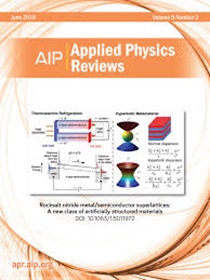Smart diapers: From wetness monitoring to early diagnosis
IF 11.9
1区 物理与天体物理
Q1 PHYSICS, APPLIED
引用次数: 0
Abstract
Diaper dermatitis and associated infections are common problems that often afflict diaper wearers. These problems will become more prevalent in the future, as our population ages and more people need to wear diapers. An urgent solution is therefore needed to address these problems. Smart diapers have recently attracted much attention for their potential to significantly reduce the occurrence of diaper dermatitis and skin infections, by enabling timely change of soiled diapers via instant notification. Over the past decade, research has focused on the development of wearable technologies that facilitate the progress and commercialization of smart diaper products. Herein, we review the state-of-the-art development of smart diapers and alert systems, including sensing technologies, wireless communication protocols, and data processing strategies, as well as the extension of their capabilities from wetness monitoring to biomarker detection. Their advantages, drawbacks, and overall suitability for different groups of wearers are evaluated. We conclude by discussing the challenges, future research directions, and the potential use of smart diapers in the early diagnosis of diseases.求助全文
约1分钟内获得全文
求助全文
来源期刊

Applied physics reviews
PHYSICS, APPLIED-
CiteScore
22.50
自引率
2.00%
发文量
113
审稿时长
2 months
期刊介绍:
Applied Physics Reviews (APR) is a journal featuring articles on critical topics in experimental or theoretical research in applied physics and applications of physics to other scientific and engineering branches. The publication includes two main types of articles:
Original Research: These articles report on high-quality, novel research studies that are of significant interest to the applied physics community.
Reviews: Review articles in APR can either be authoritative and comprehensive assessments of established areas of applied physics or short, timely reviews of recent advances in established fields or emerging areas of applied physics.
 求助内容:
求助内容: 应助结果提醒方式:
应助结果提醒方式:


